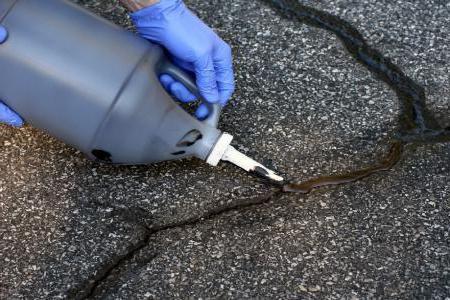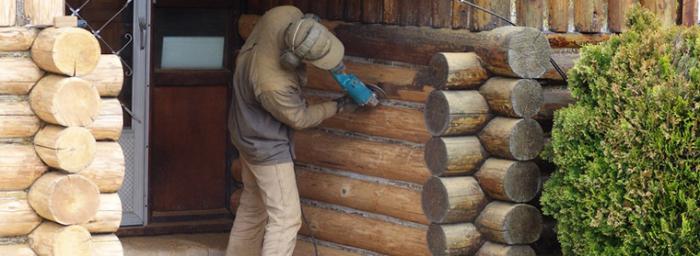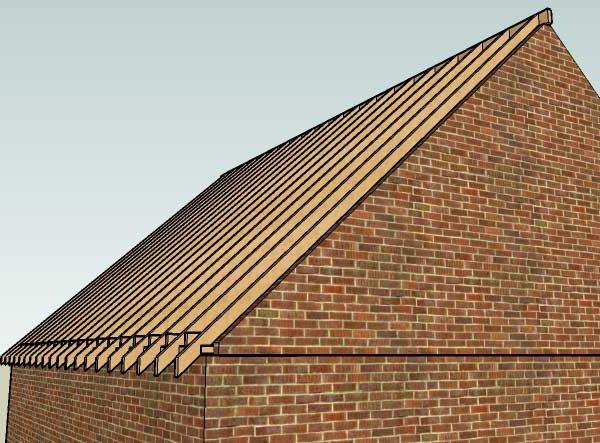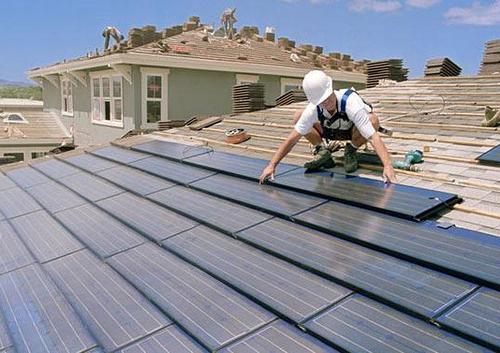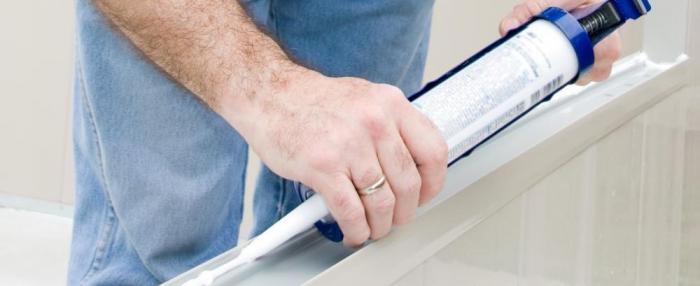Sealant for the roof: types, characteristics, instructions for use
No matter how good or modern,roofing, you need to think in advance about protecting the most vulnerable places, and first of all the joints of the material, from moisture and other destructive influences. With insulation, the sealant for the roof does a good job: with its help it is possible to cope quickly with the task in hand rather quickly. Roof sealants refer to polymer materials, which are based on the compounds of various rubbers and bitumen. Due to plasticity, flexibility, moisture and airtightness, as well as excellent adhesion, it is possible to use them for insulation of joints of all known materials. Moreover, the roof sealant can be used in the temperature range -55 ... +80 aboutFROM.

Varieties
Depending on the basis, it is common to distinguish several basic types of sealant:
- acrylic;
- silicone (rubber);
- bituminous;
- polyurethane.
Each has its own specificity, scope,that's why before you go to the nearest building store, you should understand each species well - this will help to make the right choice.
Silicone sealant
Perhaps the most popular sealant for the roof -silicone. High moisture and airtight properties, plasticity and excellent adhesion to most surfaces are in many respects provided with a base - i-loxane rubber. Moreover, it is the silicone (rubber) sealant for the roof that can withstand the effects of high temperatures (even prolonged heating), as well as direct sunlight, which makes it suitable for sealing the roof, even from natural tiles.

Acrylic Sealant
Roof sealant on acrylic base more oftenare used for the processing of seams, cracks and joints between the canvases. It demonstrates the greatest efficiency in those cases when there is a possibility of displacement of adjacent webs relative to each other as a result of sharp temperature fluctuations, as well as significant physical loads. Modern manufacturers use silicone additives that approximate the acrylic roofing sealant by properties and characteristics to silicone. At the same time, its value remains still more democratic. Most often, acrylic based products are used to work with a porous base, for example brick, concrete - here it demonstrates maximum efficiency.
Acrylic sealant can be not only white, but also transparent. Due to antifungal additives, it is possible to protect it from the effects of mold and fungus bacteria and significantly prolong the life.
Bitumen Sealant
If you are looking for a sealant for metal roofing,pay attention to the product based on bitumen. In this case, you get excellent characteristics and high adhesion to the metal base. Bitumen sealant is represented by bitumen with the addition of aluminum pigment - this is necessary for masking the material on the roof surface. Due to the pigment, the composition acquires a rich metallic shade. It is really an excellent plastic material, ideal for roofing. Bitumen sealant has absorbed a number of important properties and characteristics. First of all, it is durability and resistance to various kinds of influences, including moisture and temperature differences. Moreover, it is really nice and comfortable to work with, and all thanks to excellent adhesion, not only with a dry, but also with a wet base. The bitumen based sealant is ideal for filling cracks, joints and voids between metal sheets, as well as connecting the roof with a ridge and chimney - it not only isolates well, but also fixes individual components.

In the work with bitumen sealant should be taken into accounthigh toxicity, which is why it is suitable exclusively for outdoor applications. Do not use remnants of the composition inside the living area. In summary, I want to note the most pronounced characteristics and properties of this material:
- strength;
- elasticity;
- moisture resistance;
- possibility of painting;
- chemical inertness;
- adhesion to most bases;
- affordable price.
Polyurethane Sealant
The basis of polyurethane sealant ispolymerized resin. Due to the creation of special production conditions, observance of the temperature regime, it is possible to achieve the required viscosity of the material. This is what makes it possible to use it to seal flat roofs. Polyurethane sealant showed excellent results at low temperatures. There are several varieties of this composition:
- Sealing - for work with a dry base;
- waterproofing - to work with a wet base and come into contact with moisture.
Polyurethane sealant is quite popular among modern builders, and all thanks to a number of characteristics. The latter include:
- chemical inertness;
- resistance to damage and temperature effects;
- possibility of staining;
- economy;
- durability.
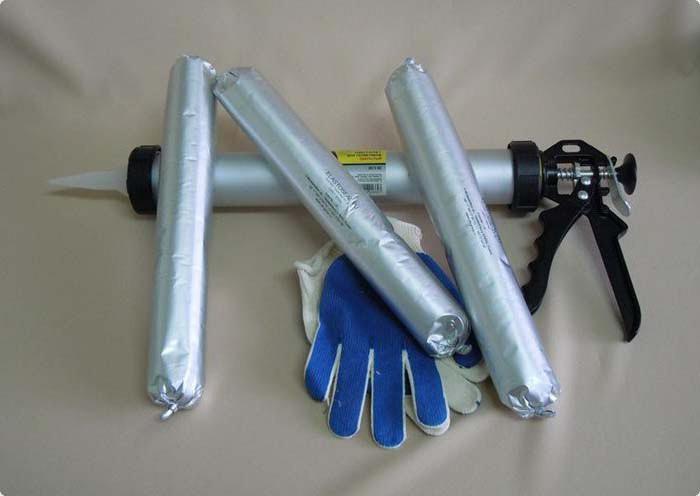
Perhaps the only drawback of sealant onthe basis of polyurethane is its fairly high price. But due to the longevity and economy of consumption, it is fully justified. Moreover, it is the sealant for roofing based on polyurethane is considered universal. And all thanks to its adhesion to most of the known surfaces: wood, metal, brick, concrete.
Band Sealant
If you are looking for material that is pleasant in work and withthis is quite effective, you will probably have to taste the sealing tape for the roof. The basis here is butyl rubber, which gives the material unique properties and characteristics. Band sealants are well tolerated by various temperature fluctuations, as well as exposure to direct sunlight, due to which they are excellent for roofing works. Tapes have a high adhesive ability, simplifying installation work: it is enough to put the product to the place of joining the material, press it tightly - and you will get a reliable and durable, and most importantly, hermetic connection.

Roof insulation made of metal
If you decide to build a roof of metal, thensealant for its insulation must have excellent adhesion to metal surfaces, to tolerate vibration, the effect of atmospheric precipitation. These properties have sealants based on bitumen and polyurethane. To work with them, first degrease the substrate with an ordinary solvent.
Important! For metal roofs, silicone is not suitable - it is able to oxidize metal and cause premature corrosion, which is unacceptable in this case.
Roof insulation from corrugated board
The construction of such a roof involveshorizontal and vertical fixation of roofing material. In this case, well suited acrylic, silicone and polyurethane sealant. Before work it is necessary to degrease the base and make sure that it is dry - only in this case you can count on high efficiency.

Insulation of soft roofing
Need a sealant for soft roofing? Then you should stop on varieties based on bitumen. To isolate the joints of a flat roof it is better to use bitumen mastic, and for the formed joints - bituminous sealant. It gives a strong, durable and qualitative connection that is resistant to the effects of temperature fluctuations and all negative weather manifestations.
Tytan - the answer of modern manufacturers
Tytan roof sealant is an inventionmodern manufacturers of building materials. It is a one-component, ductile and viscous compound based on a combination of bitumen and rubber. This is an excellent sealant, featuring increased adhesion to the metal and bitumen base. It does not matter whether it is dry or wet - Tytan does not slip off the surface, provides high-quality and long-lasting insulation. It is used for joining joints of roofing material and repair work.

Two-component sealants
The maximum efficiency when working with wood,brick, concrete demonstrates a two-component sealant based on rubber. It differs in plasticity, chemical inertness and durability. This is an excellent option for those cases when it is necessary to get a smooth and beautiful seam. Two-component sealant withstands significant temperature fluctuations, it is convenient to use.
Features of use
Most often, sealants go on sale in tubesvolume of 310 ml. To work with them you will need a special "gun", which you can buy at any construction shop. With its help it is possible to economically spend material, and also to receive ideally even and strong seam.
It is much more effective to work with dry anddegreased base. Even if the sealant involves working with a wet base, it is best to avoid this if possible. To work with the composition, you will need special attachments, with which you will be able to get the seam of the required thickness - they, again, can be purchased at a specialized building store.
Work should be carefully, carefully,Do not overdo it with soft and ductile material. After the completion of the work, you need to make sure that the compound is tightly attached to the base and edges of the roof - this is a guarantee of a reliable and hermetically sealed connection.
Quality insulation of the roof - the guarantee of itsdurability and reliability. That is why it is so important to make regular inspection of the roof, repair the divergent seams, the resulting cracks. And for this you should use only high-quality materials. And it is not necessary to resort to the help of professionals - most of the work can be handled independently.


